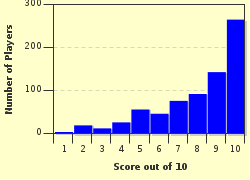Quiz Answer Key and Fun Facts
1. The Nile is usually considered the longest river in the world. Where do the Blue Nile and the White Nile converge to form the Nile proper?
2. Sudan is a large country. It is nearly one-fifth the area of which of the following?
3. The northern portion of Sudan, other than the Nile valley, consists largely of desert. Which major desert(s) is (are) represented?
4. Sudan is nearly, but not quite, landlocked. What body of water borders the northeast section of the country?
5. In the 21st century, prior to the secession of South Sudan, what had been Sudan's most valuable known natural resource?
6. Sudan borders seven countries with border lengths ranging from 109 miles (175km) to 1,357 miles (2184 km). With which country does Sudan share its shortest border?
7. What is (are) the official language(s) of Sudan?
8. About 97 percent of Sudan's population follows this dominant religion. What is this religion?
9. Sudan has a series of ancient pyramids and stelae. Which kingdom, in what is modern Sudan, controlled Egypt during the 25th Dynasty?
10. Khartoum is of course the capital of Sudan. But what is the populous city which houses the famous tomb of the Mahdi?
Source: Author
ArlingtonVA
This quiz was reviewed by FunTrivia editor
Pagiedamon before going online.
Any errors found in FunTrivia content are routinely corrected through our feedback system.

